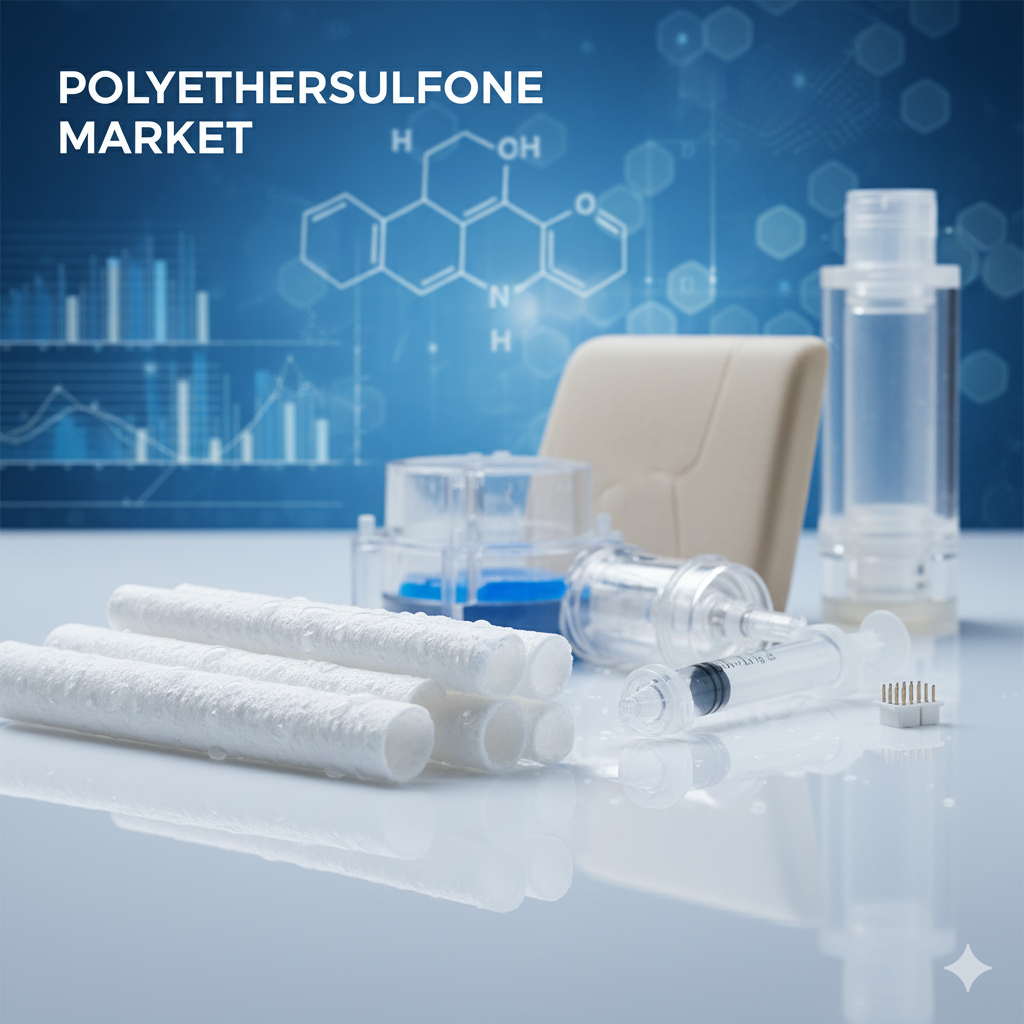PES Market Progress Despite Supply Chain Constraints and Specialized Processing Requirements

The global polyethersulfone (PES) market value reached US$ 368.4 million in 2022 and is expected to reach US$ 658.5 million by 2031, growing at a CAGR of approximately 7.6 % during the forecast period 2024-2031.
PES is a high-performance thermoplastic polymer known for its excellent thermal stability, chemical resistance, mechanical strength and dimensional stability. These properties make PES well-suited for demanding applications such as water- and air-filtration membranes, medical devices (e.g., dialysis filters), electronics components, automotive parts and industrial equipment.
Download Sample PDF:
Market Segmentation
-
By Grade / Industry Type: Medical Grade; Industrial Grade
-
By Application: Membrane & Filtration; Medical Devices; Electrical & Electronics; Automotive; Others
-
By Region: North America; Europe; Asia-Pacific; South America; Middle East & Africa
Regional Insights
-
Asia-Pacific: The largest region in terms of market share, driven by rapid industrial development, expanding electronics and automotive manufacturing, and rising demand for water treatment and filtration technologies.
-
North America: A key market due to strong healthcare infrastructure, wide use of filtration membranes and advanced manufacturing for electronics and medical devices.
-
Europe: Significant presence, supported by mature advanced-materials sectors and strong demand in filtration, medical and automotive applications.
-
South America & Middle East & Africa: Emerging markets with growth opportunities, especially in water treatment, medical equipment and industrial expansion, though uptake may be slower due to infrastructure and cost constraints.
Key Market Drivers
-
Demand for advanced filtration and membrane technologies: PES membranes are used in water- and air-filtration systems, including for clean water supply and industrial purification, which drives material demand.
-
Growth in medical device applications: PES’s resistance to sterilisation and biocompatibility make it an attractive choice for medical equipment like dialysis filters and other implanted/disposable devices.
-
Increasing use in electronics, automotive and industrial sectors: As manufacturing advances and performance demands rise (e.g., for connectors, housings, heat-resistant components), PES becomes more popular.
-
Rising industrialisation and infrastructure development in emerging markets: Growth of manufacturing capacity, water treatment plants and automotive/consumer electronics in Asia-Pacific supports PES demand.
Market Challenges
-
High cost of raw materials and processing: PES is a premium polymer and its higher cost relative to commodity plastics may restrict adoption in cost-sensitive applications.
-
Competition from alternative polymers: Other high-performance materials (e.g., PPSU, PSU, PEI) may compete depending on required performance and cost trade-offs.
-
Supply chain and processing complexity: Manufacturing with PES (especially in specialised grades or for membranes) demands specific processing conditions and quality control, which may limit rapid adoption in certain regions.
Leading Market Players
Key companies operating in the PES market include:
-
Solvay SA
-
BASF SE
-
Sumitomo Chemical Co., Ltd.
-
Jiangmen Youju Polymer Materials Co., Ltd.
-
Shandong Horan Plastic Co., Ltd.
These firms are focusing on developing advanced PES grades (e.g., for medical, filtration, electronics), expanding regional manufacturing, and addressing specialised applications that demand high performance.
Recent Industry Developments
-
Launch of new PES membrane grades with improved wettability and filtration performance, enabling use in applications previously inaccessible to traditional membranes.
-
Expansion of production capacity in Asia-Pacific regions to serve growing local demand for high-performance polymers in filtration, electronics and automotive.
-
Introduction of reinforced PES formulations (e.g., glass- or carbon-fibre filled) to broaden structural and high-performance applications in automotive and industrial sectors.
Conclusion
The polyethersulfone (PES) market is set for robust growth, supported by increasing demand for high-performance materials across filtration, medical, electronics and automotive sectors. With the market projected to grow from US$ 368.4 million in 2022 to US$ 658.5 million by 2031, companies that prioritise innovation, cost-effective manufacturing and regional penetration especially in Asia-Pacific are well-positioned to capture significant opportunity. Despite challenges related to cost and processing complexity, the outlook remains positive.
- Art
- Crafts
- Drinks
- Fitness
- Food
- Spiele
- Health
- Home
- Literature
- Music
- Networking
- Finance
- Other
- Hotels
- Shopping
- Sports
- Wellness


